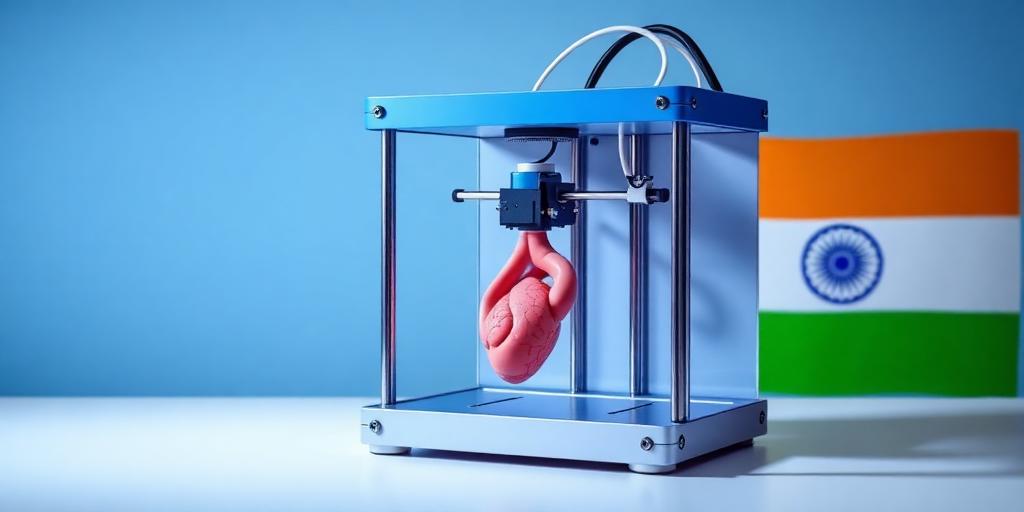3D Printing in Medicine: Applications in 2025 (India & World)
3D printing, also known as additive manufacturing, is revolutionizing various sectors, and medicine is no exception. By 2025, the integration of 3D printing in healthcare is poised to expand significantly, offering innovative solutions for both India and the global medical community. This article explores the anticipated applications and advancements in 3D printing within the medical field.
Current State of 3D Printing in Medicine
Before projecting into 2025, it’s essential to understand the current landscape. 3D printing is already making inroads in several key areas:
- Prosthetics and Implants: Customized prosthetics and implants are being created to match the exact needs of patients, enhancing fit and functionality.
- Surgical Planning: 3D-printed models of organs and tissues are used for pre-surgical planning, allowing surgeons to visualize and practice complex procedures.
- Drug Delivery: 3D-printed pills can be designed to release medication at specific rates, improving therapeutic outcomes.
- Bioprinting: The creation of functional living tissues and organs is an emerging field with the potential to revolutionize transplant medicine.
Applications in 2025
By 2025, the applications of 3D printing in medicine are expected to broaden and become more sophisticated:
1. Personalized Prosthetics and Implants
- Advancements: Expect higher-resolution printing, biocompatible materials, and integration with sensors for real-time feedback.
- Impact: Improved patient comfort, functionality, and reduced risk of rejection.
2. Advanced Surgical Planning
- Advancements: Integration of augmented reality (AR) for real-time surgical guidance using 3D-printed models.
- Impact: Shorter surgery times, reduced invasiveness, and improved outcomes.
3. Customized Pharmaceuticals
- Advancements: On-demand printing of personalized medications tailored to individual patient needs.
- Impact: Enhanced drug efficacy, reduced side effects, and better patient compliance.
4. Bioprinting of Tissues and Organs
- Advancements: Development of more complex bio-inks and techniques for printing functional tissues (e.g., skin, cartilage) and simpler organs (e.g., blood vessels).
- Impact: Potential to eliminate organ shortages, reduce reliance on donors, and accelerate regenerative medicine.
5. Medical Devices
- Advancements: 3D printing of customized medical devices, such as surgical tools and diagnostic devices, with improved precision and functionality.
- Impact: Enhanced medical procedures, better patient outcomes, and reduced healthcare costs.
3D Printing in Medicine: India vs. the World
Global Trends
- North America and Europe: Leading the way in research, development, and adoption of 3D printing technologies in medicine.
- Asia-Pacific: Rapid growth driven by increasing healthcare expenditure, technological advancements, and government support.
India’s Position
- Challenges: High initial investment, lack of skilled professionals, and regulatory hurdles.
- Opportunities: Government initiatives promoting local manufacturing, rising healthcare awareness, and a large patient population.
By 2025, India is expected to see increased adoption of 3D printing in specialized areas such as prosthetics, dental implants, and surgical planning. Collaborations between Indian institutions and global leaders will be crucial for technology transfer and skill development.
Challenges and Opportunities
Challenges
- Regulatory Framework: Clear guidelines and standards are needed to ensure the safety and efficacy of 3D-printed medical products.
- Cost: Reducing the cost of 3D printing technologies and materials to make them more accessible.
- Scalability: Scaling up production to meet the growing demand for 3D-printed medical solutions.
- Skill Development: Training healthcare professionals and engineers to effectively use and maintain 3D printing equipment.
Opportunities
- Collaboration: Fostering partnerships between researchers, industry, and healthcare providers.
- Investment: Increasing investment in research and development of 3D printing technologies.
- Localization: Promoting local manufacturing and reducing dependence on imports.
- Education: Raising awareness among healthcare professionals and the public about the benefits of 3D printing.
Conclusion
The medical field is on the brink of a significant transformation thanks to 3D printing. By 2025, we anticipate widespread adoption of customized prosthetics, advanced surgical planning, personalized pharmaceuticals, and the emergence of bioprinted tissues. While challenges remain, the opportunities for innovation and improved patient care are immense. For India, strategic collaborations and supportive policies will pave the way for integrating 3D printing into its healthcare ecosystem, aligning with global advancements and addressing unique local needs.
